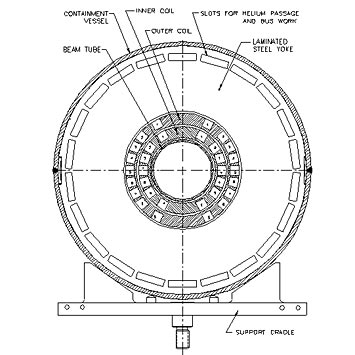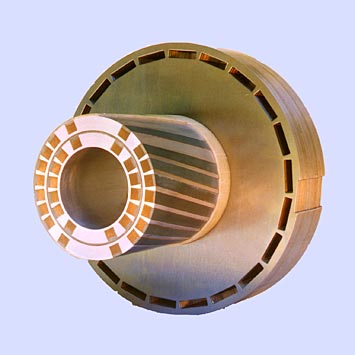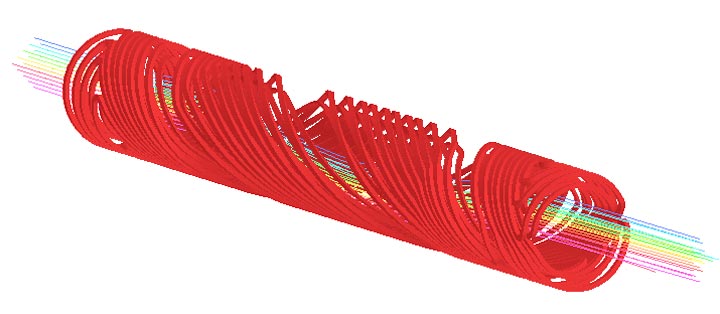Helical Magnets Project
Helical magnets are required in RHIC and in the AGS to control proton spin in a program for polarized proton colliding beam experiments. For RHIC, the basic construction unit is a superconducting dipole magnet producing a four tesla dipole field that rotates through 360 degrees in a length of 2.4 meters. The magnets are built by placing small diameter superconducting cable into helical slots milled into thick-walled aluminum cylinders. An iron yoke is placed around two of these nested coils to form a single magnet. A cylindrical shell is welded around four of these magnets and placed into a cryostat to make a Snake or a Rotator. The particular field that is powered in each magnet, its angular orientation and its helicity determine whether the unit will act as a Snake or a Rotator in the RHIC lattice. Two Snakes control the proton spin in the lattice of each ring and four Rotators in each ring orient spin at two collision points. A collaboration with the Japanese institute RIKEN provided partial financial support to carry out the program.

Cross section drawing of a helical magnet for RHIC. The inner coil diameter is 80 mm.

Photograph of a section cut from a prototype RHIC helical dipole magnet.
For controlling proton spin in the AGS, a single three tesla helical snake magnet is being designed and built. This magnet will have a coil inner diameter of 200 mm and a length of 2.3m, with two distinct pitches for the windings. Careful balancing of the lengths and total rotation angle of each helical pitch is required to avoid undue perturbation of the AGS beam. Various correction windings are being planned for the magnet, to be placed on the outer surface of the inner cold bore tube. Since the AGS tunnel does not have cryogenic services, it is planned to cool the Snake with dewars of liquid nitrogen and liquid helium followed by steady state cooling using cryocoolers.

Drawing of the two-layer coils for the AGS Snake. Note that the pitch of the helix for the center portion of the coils is less than for the outer portion of the coils.


